Interview with
Nicolay Leontyevich Shevchenko
by Konstantin Chirkin
Edition by Oleg Korytov and Igor Zhidov
Translation by Oleg Korytov
Special thanks to Svetlana Spiridonova
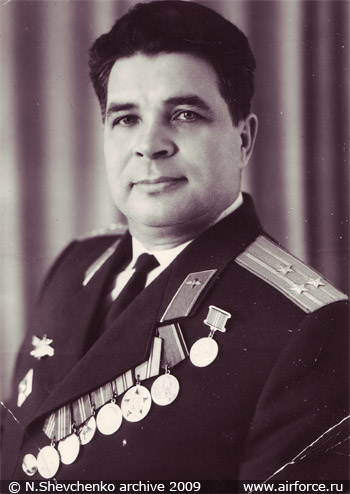
Shevchenko: I’m Nicolay Leontyevich
Shevchenko. Deputy Chief of veterans’ council of Air Force academy named
after N.E. Zhukovskii and Yu.A. Gagarin. Veteran of combat action in
Vietnam. Fighter pilot with a flight experience of 27 years. Had mastered 15
airplane types. Had participated in flight experiments with combat use of
Sukhoi aircraft. PhD. associate professor. Author and co-author of 64
scientific articles, textbooks and monographs. Prepared 8 Philosophy
doctors. Colonel.
— When and where you were born?
I was born on 1 January 1930. My parents
were kolkhoz members. Father was a tractor driver, mom worked as a handyman.
I was born in historic place. I understood it only now. I like history, and
study it. There is a hypothesis, that Russia begun from Ross’: at the place
where I was born a little river Targan is joining river Ross’. In the delta
of Targan river there is a village Parkhomovka. That’s 100-120 kilometers to
the south from Kiev towards Odessa, just a bit off to the side from the
road.
This village is famous for its three-cupola church. Height of the cupolas
was 75 meters. It was decorated by Nicolay Rerikh.
In 1987 Mikhail Gorbachev while on his trip to India met Svyatoslav Rerikh.
He said:
— In Kiev Gubernia there is a village, where my father left a memory about
himself…
In the following 2-3 years village had changed. Restorers came not only from
Kiev, but from Moscow too.
Around church there was brick fence, inside of which there were southern
plants: Grapes, olives…
In 30s church was turned into a warehouse. I was a kid then. We used to
climb to the bell tower to chase off the pigeons, I also did so…
I remember how I watched first movie on the street. I believe it was “Chapaev”.
We sat on the crosses that were thrown to the ground from the cupolas and
watched the movie projected on the wall…
Somewhere in 1937 a first tractor appeared in our kolkhoz. My father became
a tractor driver. Tractors were assigned to the MTS – machine-tractor
station, and when war broke out it was evacuated. My dad was also evacuated.
That’s when I saw him for the last time. I asked him to take me with him,
but he replied:
— You are barefooted, I can’t take you.
He said it to get rid of me. Father was evacuated, but we stayed on the
occupied territory…
— How did you find out that war begun?
What were your feelings?
Tensions began a week or two before. A
command came in to destroy crops. They were rammed to the ground. To be sure
that Germans won’t have it.
But our village was in a secluded place. When war begun our troops were
retreating, a lot of soldiers stayed in our places, some got married.
Germans didn’t touch them.
— What life was like during occupation?
During occupation… When Frontline moved
away, all kolkhoz property was taken apart: livestock, horses, cows and
beehives, everything was taken. Mom said:
— Nikolai, let’s go, we need a horse. If there will be a horse, we will stay
alive.
There was a lot of no one’s livestock on the fields. So we went and caught a
horse. So I had to take care about horse and cow.
We were given some land… I don’t remember how much exactly, about 5
hectares. But we had to work on this ground. And we did when Germans came.
Depending on how much land we had, an order was given how much grain we had
to deliver to occupation government…
— Was there a German garrison in your
village?
No, there was none. We had a German
governor. But he was not such a bad man. Germans went through, and almost
hadn’t stayed. Mostly atrocities were done by police. They tortured and
killed…
Before war I graduated from 4th grade. I continued my education only after
liberation in 1944. Front moved over us, and I continued to study in
Parkhomovka, by shortened program I finished 7th grade.
It was hard to study — there was no footwear or clothes. Mom was alone with
three kids — I and two sisters, Anna and Nadia, one older than me, other
younger…
— What did you write on?
I had a notebook made of German bags – we
cut them into fitting pieces. And no textbooks at all.
Our medium school was large; kids came from four different villages. After
sixth grade almost all boys left, some went to plant schools, some to
technical schools. Only girls were left and two boys. One of us went to
Leningrad to apply for a naval school, but he didn’t make it due to health
condition. I studied well, had 4 and 5. I decided to try my luck in this
same school. Mom gave me road bag, pork fat, onions and five rubles of
money. Imagine? I managed to get to Kiev. I had to load a train in Kiev and
travel to Leningrad. But I haven’t seen a steam locomotive in my life
before. I remember, on 27 July I left Kiev. I thought that by 1 August I’ll
reach my destination. Trains were called “500 funny“. It went to Leningrad
for a week. They were free to travel on. So I came to Leningrad. I met there
with one boy. He studied in a special Leningrad school. He showed me the way
to the school. I came there, but they told me:
— You are late, we are full.
Boy said:
— Let’s go to artillery school.
He guided me to artillery school, I showed my marks there. They were ready
to accept me, but I intuitionally didn’t like artillery. Then we talked
about aviation schools. They told me that there was one in Kiev, and that
there was no need for me to study in Leningrad. I returned home, and
continued to study in 8th grade. That’s how I failed to become a sailor. Now
I decided to become a pilot.
Older sister Anna has gone to Belaya Tserkov, to become a nurse. Three of us
were left: Mom, I and younger sister Nadia. I had to find a job. So I worked
and studied. I graduated from 8th grade, and my friend told me:
— In a newspaper there is an article where you should go — Special school of
the air force.
This special school was located in Kiev. Orphans had and priority in
accepting. 9th grade I studied in special school…
There was another reason that made me go there — our local school was
closing. There simply were not enough pupils. Those who decided to study
were transferred to a school in Volodarka. But to study there one had to
have boots and clothes. I had none of those. So I decided to try and apply
for a place in Kiev Special School of the Air Force.
There were exams: Dictation, math. I am a Ukrainian, while all studying
there was done in Russian. But I was accepted to 9th grade. Studying in
Russian caused a lot of problems. At first I had 5s only for Ukrainian
language. I even received prizes.
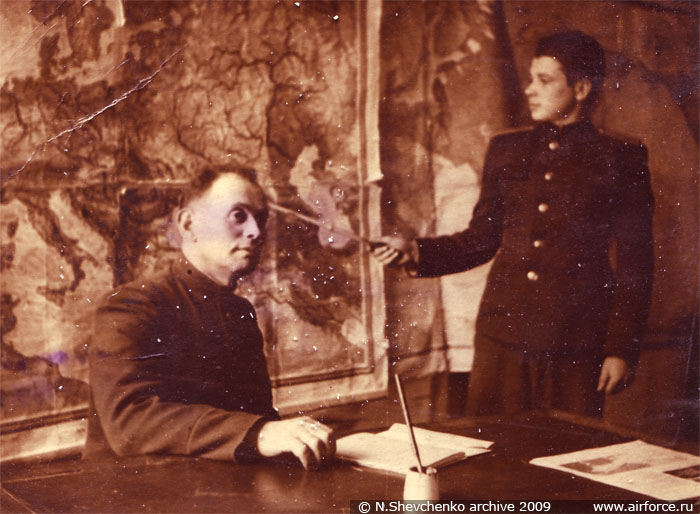
— And what about your village school?
There was a Russian language subject, but
all other lessons were taught in Ukrainian... To learn how to think in
Russian, one needs years. At first my friend was a translator for me.
— How was you dressed and fed in
school?
We lived in barracks. School dressed us
and fed us. We were dressed well, but food was in short supply at first.
Ration: in the morning — 500 grams. I ate it before I got to the third
floor. Cabbage for dinner and a bucket of tea for four for supper. I
remember that in 1948 there was a monetary reform, after which we were fed
excellently. I found out what was butter, rice, white bread.
I was also in training camps. Most important for us was physical training.
In the morning we ran 1000 meters. After it we swam across river there and
back. There were 5 hours of training per day. We were very well trained. But
a lot of pupils were expelled from special school.
— By which subjects your school
differed from usual?
We studied like in usual school, and we
had extra classes in aviation. We learnt airplane construction, aero engines
and so on. Most importantly we were taught to love aviation…
In 1949 I graduated from school and was sent to Bataisk VAUL named after
Serov.
We didn’t have to pass exams. Kiev school had an agreement – almost all
graduates were sent to fighter schools. Very few became bombers. But out of
120 graduates only 55 came to Bataisk. All others were not accepted due to
health problems or other reasons. As usual, there were people with pull. It
was a good school: food and clothes for free, best teachers, and this is why
such a people sought to get there. They were using their connections to
enter the school and leave it later. Only one half remained.
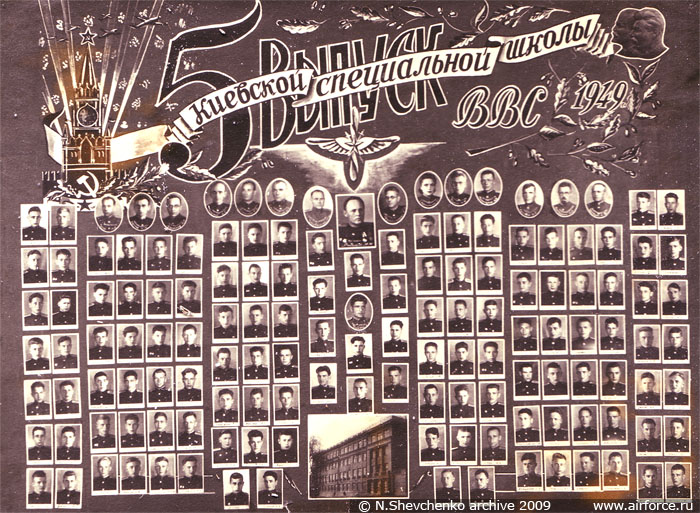
I keep looking after such questions even
now, as there are such schools now. Nowadays only 20% stay in aviation…
Special schools are very costly for the state… We have to change acceptance
criteria. We should teach not the “sons”, but those who are like I was —
barefooted. They will always be loyal, they will learn and become pilots.
For us becoming a pilot was not even a dream, and we got such a chance!
We were taught about aviation in the school in theory, now there is a flight
practice. It is by itself a hard work. He will get into turbulence, he will
shake in flight and think:
— I don’t need your 10th grade. I’ll go to financial career or become a
lawyer.
You can’t be in aviation without loving it… I flew fighters “upside down”
for 27 years. It’s not easy… It wasn’t cloudless. Anything happened. But I
loved it.
— What you remember from studying in
VAUL? What it begun from?
It started from theoretical battalion, and
then we flew in a training regiment near Novocherkassk.
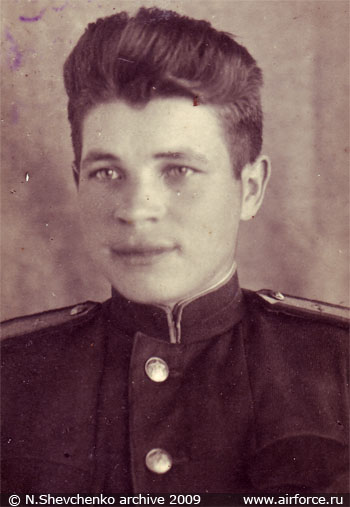
— A “young soldier’s course” at first?
No. Quarantine. For about a month…
— Were you used as a workforce?
Oh, we were, but not while we were in
quarantine, but when we were cadets. We finished theoretical battalion,
which was supposed to last for a year. But a company of cadets from
Borisoglebsk was transferred to Bataisk, who also finished theoretical
education. They were first to be sent to the training regiments. We were
ordered to dig out a crater, after we finished we were sent to vacation.
When we returned we were ordered to dig this crater back… 300 hundred times
per year on guard. We worked a lot…
— Were there GPW veterans in the flight
school? What can you tell about them?
There were a lot of veterans in the
school. In our company there was detached 9th teaching department, equipped
only with veterans. Those were former gunners, radio operators and
technicians. They with great respect studied, all graduated and successfully
served in the armed forces.
Graduates from Bataisk school were famous in our country, as an example,
Maresyev Аlexey, HSU, colonel, PhD, honorary citizen of many Russian towns;
Marshall of aviation Skomorokhov N, Twice HSU, PhD, professor;
General-Colonel of aviation Dolnikov G., Military Pilot Emeritus, PhD;
General-Major of aviation Bezhevez A., HSU, Test Pilot Emeritus.
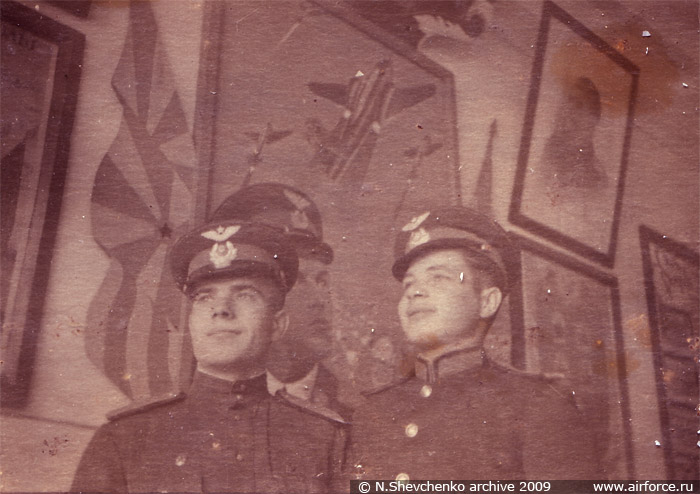
— When you were sent to training
regiment?
Can’t say precisely… Somewhere in the
beginning of 1951.
— What type of airplanes you flew?
Yak-18. I still remember my first
impressions. I was appointed as a commander of a flight group. Each
instructor had a flight group of 5-7 cadets. My first instructor was Zuikov.
Before starting training of cadets, instructors in the spring fly training
flights themselves. He took me instead of a sandbag into rear cabin, and
flew a training mission. We made 6 flights together. I felt so sick, that I
decided that my flying career was over.
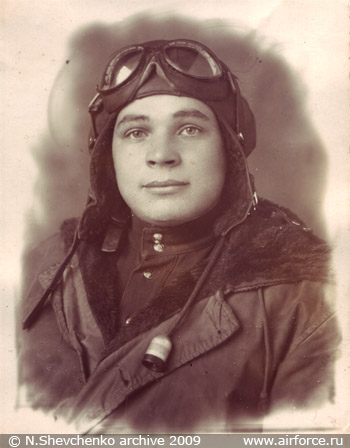
—Which planes you flew later?
Then we mastered transition airplane
Yak-11. By its flying characteristics and construction it was very different
from Yak-18 and was closer to La-9 fighter. In those days to become a
graduate from our school and receive a profession “pilot-technician” we had
to master three types of aircraft.
Instructors were Eduard Gazkevich and Anatolii Shevchenko. We flew near
Novocherkassk and Azov.

— How would you describe La-9?
Excellent airplane. It was a king in the
air, very nice airplane. It easily stopped spinning… But landing was
difficult. It killed a lot on landing…
5 of us begun training, only 2 finished. One, from my group, had broken 4
planes on taxiing, and still couldn’t master La-9 on landing, but he was
willing to fly so much, that he was left in the school to train straight on
jet fighter MiG-15, which he mastered well.
I met him in Kramatorsk. He was a squadron commander then and flew Su-15. It
was nice to meet him. But he couldn’t fly Lavochkins, because they demanded
high leg and hand coordination. If stick was pulled a bit too hard, it
banked on the wing, which had to be later repaired. Pilots were excluded
from school on the period of La training.
Commander used to say:
— Who flew Lavochkins has nothing to worry about in MiG-15.
— You graduated from flight school in
1952. Where you were sent?
To Tapa, in Leningrad military district,
that’s Estonia. To 656th fighter regiment.
— How this regiment was equipped?
Regiment was of reduced strength. People
came from Korea. Regiment commander was Major Mikhailov.
Regiment was a part of a Corpus, its commander was Gil’. I remember this
surname. Lenin’s driver was Gil’.

— What was the attitude of local
population towards our pilots in Estonia?
There was something called “forest
brotherhood”, but we had felt nothing bad. We used to go for dances. Not
only regiment officers, but I think all division — almost everyone was
single…
— When you came to combat regiment, you
begun flying on MiG-15 UTI or on a fighter straight away?
There was a twin-seater — UTI MiG-15, and
six men were taught in the regiment. Others had to train in Kyzyl-Arvat.
— For you personally which plane was
easier to fly: MiG-15 or piston-engine?
MiG-15 is much easier in piloting.
Especially on landing. Pilots are usually written off mainly because of the
problems on landing. Pilot must feel last ten centimeters by his butt…
It’s the same in civil aviation, everywhere the same. And those, who do not
feel the ground, who do not have this special feeling, are written off.
— Landing speed on MiG-15 was much
higher?
Of course landing speed on MiG-15,
comparing with Lavochkins, was higher — 300-320 km\h.
— How long you were in this regiment?
For 2 years. Then VVS regiments were
transferred to PVO, so I was transferred to Leningrad 6th PVO Army to
Karelian Isthmus. Veshevo AB near Vyborg. There was such a great fishing!

— How many flying hours average pilot
had in your regiment?
Average… If flights with instructor are
not included, 100 hours for a pilot. Beginner pilot could have a bit less,
80-90, commander 150–160 hours in a year.
— Is it enough? Wouldn’t 300-400 hours
be better?
For each plane type there should be its
own satisfactory flight time. For transport or bomber aviation it could be
300-400 hours, for ground attack planes and fighters 120-150 is enough. For
example I had to fly down south in a Su-9 in July. Most flights were made
for top speed or top altitude. They all were performed in hermetic helm.
Flight lasted for 35 minutes. Make 3 flights per day – and loose 1,5
kilogram of weight, while you gained only 1,5 flying hours. Those were
difficult flights.
— How much time was given for pilot
practice and for combat training?
For different planes different time.
Approximately 35-40% - for flying practice and 60-65% - for combat training.
— You came to the regiment as a
Lieutenant?
Yes. At Tapu we flew in complex weather
condition…

— You were transferred to PVO regiment
as a pilot, or a senior pilot?
Senior pilot, later I became a flight
commander.
— What was the difference between
training in PVO and VVS units?
Training of PVO and VVS was slightly
different. The differences were defined by types of weapons utilized and
main tasks of the units.
Main task for VVS is a cover of ground forces and striking against enemy
troops for benefit of ground or naval forces. PVO is tasked with covering VI
objects in the rear.
— Did you meet KW veterans? What did
they tell you about that war?
In the skies of Korea our MiG-15 met
newest American fighter F-86 Saber. Both planes were very similar, engines
of almost identical power, but our MiG was much lighter, and that’s why it
surpassed Saber in rate of climb and maneuverability. Besides, firepower of
MiGs cannons was much more effective than that of Sabers 6 12,7 machine
guns. Famous B-29s also couldn’t escape from MiGs fire. We also suffered
some losses, especially in the beginning of war.
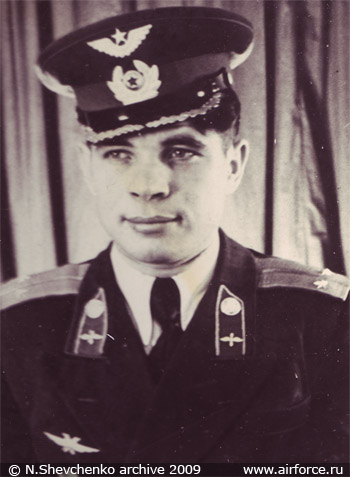
— How combat experience was passed to
young pilots?
It was organized by seminars,
re-enactments, description of episodes at books and training courses.
— Did you fly real combat missions?
I flew real intercept missions on MiG-19.
When I was transferred a group against high flying targets was organized.
Americans launched unmanned balloons those days, and we flew against them…
Division commander Gromov ordered:
— By spring you have to fly in complex weather condition at night.
Training on MiG-19 was organized. Those were lightened MiG-19s in my high
altitude interceptors’ flight… One pilot crashed due to technical reasons…
he fell to the airfield...
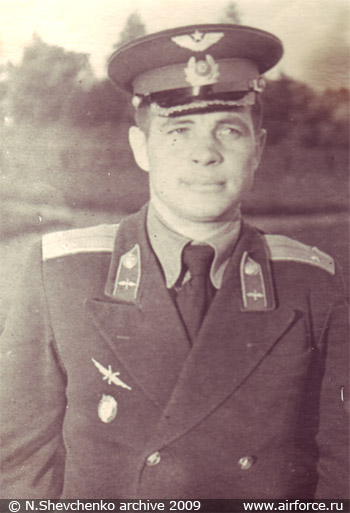
— Did you shoot any balloons down?
No, I don’t. You know, it was difficult to
be sure that balloon was shot down. You pierce it, it descends and moves far
away.
Enemy planes didn’t fly in our area of responsibility.
— What was armament of your MiG-19s?
Only cannons…
— MiG-19 for a long time suffered from
Teething problems.
For a very long time. Mainly problems with
flight controls… There were lots of cases…
— When you begun flying MiG-19?
In 1956, I believe.
— For how long you were in Leningrad
PVO?
Until 1958. Then I studied in the Academy.
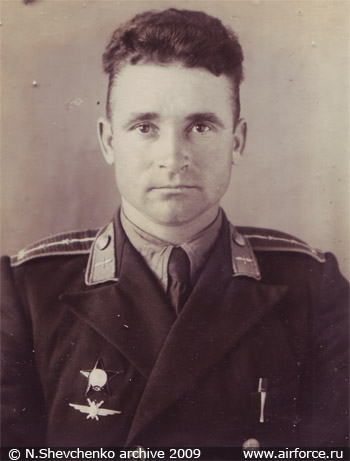
— You mastered T-3 before or after
Academy?
After. I came there as captain, studied
for four years and graduated in 1962.
— And where you were sent then?
To Ovruch. That’s on the
Ukrainian-Belorussian border.
— What was your rank and post in this
regiment?
I came as deputy squadron commander with a
rank of Major. Regiment was equipped with MiG-17. There I stayed for a short
period of time. Later I was sent as a division instructor for flight
technique to Vasilkov. There I also stayed for a short period of time…
— Inspector of PVO division has to fly
all types of airplanes?...
Yes. And I was sent to train on Su-9
immediately.
— Did you fly Yak-25s?
No, I didn’t fly it.
— Your opinion about Su-9?
Very complex airplane. Lavochkin was
difficult on landing, while Su-9 was difficult in the air. Commanders
usually mastered it, but flew further on other types of airplanes. Su-9
killed a lot of pilots.
Its task was intercept of high altitude targets. It was exceptionally good
at the ceiling, but handling characteristics were bad at trans-sonic speeds.
I also had a case, which I still remember. I flew it during daytime fine,
and it was my fourth night mission. I took off in MiG-17 from Vasilkovo to
Zaporozhye — to fly at night, our regiment equipped with Su-9 was based
there.
From a preflight briefing to take off, usually passed almost 1,5 hours. At
first weather was checked: it was good at the moment, but promised to worsen
later.
I took off. Zaporozhye — lights were everywhere below clouds. Second turn, I
gained speed quite fast, somewhere 800-900 km\h, and at this speed plane
spun. I gave controls to exit spin…

I’ll describe it like a spin-barrel,
uncontrolled one, of course. I had 2 000 meters of altitude then.
I reported to ground controller Prokofiev:
— I’m in a spin.
Recalled aerodynamics, theory, which I was taught in the academy. And
applied correct control input. It stopped spinning in upside down position
below clouds... I lost over 1 500 meters in this spin.
Prokofyev:
— What’s going on 601?
I replied:
— everything fine. Approaching to land.
That’s an example how unpredictable it was. So many lives it took away…
Su-9 improved. Some aerodynamic improvements were made and added some fuel.
It mainly flew for 30 minutes. And those flights were high altitude
intercepts.
— When first air-to-air missiles
appeared?
On this same Su-9 guided missiles appeared
for the first time. It carried four missiles and no cannons.
— How long were you in Vasilkovo?
You see, it was my homeland. I didn’t want
to leave it. Parhomovka was near by…
I rocked my wings when flew over it…
— Had Power’s flights in U-2 any impact
on your division?
No. It happened earlier. Power’s U-2 flew
at an altitude of 24-25 000 meters. We even had no such task to intercept
airplanes at such altitudes. Jumping ahead, to Vietnam. Our aviation had
little to oppose Americans with. Mostly missiles…
— How officers thought about Caribbean
crisis? What measures of increased readiness were announced?
Officers were calm and fully supported
Khrushchev, No special measures were imposed. Army is always battle-ready.

— You haven’t called Division number...
19th PVO Division. Division commander was
General-Major Korotchenko Alexandr. He was a "god son" of Nikita Khruschev.
Father of division commander was a chief of Kolkhoz in Ukraine.
He suggested me a post of regiment commander in Skomorokhi, but before that
I had to be a squadron commander for a while.
— Then you became a regiment commander?
Then I was sent to the hospital, as I
passed 35 years old, so I was terrorized on this commission for a month they
made a conclusion, that after hepatitis. I have to be signed off. But they
did not do it straight away, they said:
— We will sign you off on the next year.
All this was reported to Marshal Alexandr Pokryshkin, three times HSU, he
was a PVO army commander then. I met him when he was still flying, and he
knew me well. We flew together in Vasilkovo. There were special airplanes,
and all pilots who mastered Su-9 were known to the commanders in person,
because it was such a complex airplane.
— Were you in hospital due to some
sickness?
No, it was planned check up. To be sure
that a candidate for regiment commander post is fully healthy and has no
restrictions in flying.
But they did not make note in my medical card about hepatitis, they noted
that I should undergo another check up. This meant that some restrictions
appeared.
In real life it meant that restrictions were spreading not only on pilot,
but on his carrier too.
I don’t want to describe what was going on there, but I eventually wrote a
rapport: «I want to study».
But the attitude was — if pilot wants to study, he does not want to fly. And
they said:
— No way, dear!
I wrote a complaint at Korotchenko. Pokryshkin summoned me. I told him
everything.
— This is how you went to study?
No, I was not allowed to. I ran away over
the fence from the hospital, and went to See Krasovskii, chief of the
Academy. I said:
— I’m not allowed to study.
He replied:
— Then become a teacher. I will talk to Alexandr Ivanovich.
If there was no Krasovskii, there would be no Pokryshkin, be4cause HSU
Krasovskii was the Air Army commander, where Pokryshkin was a pilot.
We needed symbols, and Pokryshkin was such symbol. Who made him? Stepan
Akimovich.
Then situation escalated like this. He personally talked to Pokryshkin, who
agreed to let me go, even though Korotchenko for 2 or 3 month tried to leave
me behind. He did everything to keep me away from Academy. An order was
signed on 31 December 1965, in the New Years Eve. So I was transferred in
March 1966. That’s because I couldn’t announce that I’m about to be signed
off, and I was flying Su. Kotrotchenko greatly respected me. I used to fly
with him commonly. He even presented me with his books later. Order of
supreme commander of PVO: "Transfer from PVO to VVS". But Marshal Sudets
Vladimir Alexandrovich didn’t sign this order. Stepan Akimovich said:
— I will not go to Sudets.
Sudets went to a vacation, and his Deputy HSU, Aviation Marshall Georgii
Vasilyevich Zimin signed an order — that’s how I became a teacher in the
Academy.
— Do you remember Stalin’s death? How
people met this news?
I was in Veshevo then, at Karelian
Isthmus. It was painful for people. It was a great loss for people, and I
also believe even now that it was a great loss. I read a lot about that time
and Stalin, and I studied a lot of documents recently…
— Khrushchev’s Army reforms touched you
in any way?
Not me personally. But imagine, airplanes
were cut by his order. I saw how good pilots were thrown away. Lots and lots
of planes were destroyed… Some of those plane types are still flying to this
day. And how many ships…
Khrushchev brought big problems to our state. He shitted on Stalin… He gave
away Crimea… Even though I’m a Ukrainian myself, but I cannot agree with
this, it was done against any laws. It was a place of Russian military
glory…
— On the other hand, maybe you made a
carreer due to Khruschevs reforms?
No way! I made it on my own — I flew well.
That’s why I was not allowed to go to Academy:
— Who will fly, if you will leave?
I was an “ace”. There was such category of best pilots. Only one flight from
whole division. And we constantly competed with each other…
— Were you married then?
No, I married when I studied in Academy.
When my position stabilized. How I made it to Academy. I wrote to regiment
commander.
— Where are you going! Who is going to
shoot?
I represented squadron at the shooting
range. It’s not that easy to do from a flying airplane. I did it for
everyone. And I said:
— I want to go to Academy.
— Go, but only “in absentia”.
Commander summoned all squadron commanders:
— He wants to go to Academy.
They said:
— He will not pass.
They allowed me to apply, gave me one month to prepare, but without leaving
the regiment.
At the sports ground I was training at loping, and then it hit me at the
legs. I still have scars here. Alexey brought me to the doctor on a bicycle.
We had a doctor Ivan Petrovich. He stitched me up.
In a hospital I had a month of free time to prepare. I came to Academy with
a crutches. But I was the only one to write composition with a “5” mark.
Then there were six exams. I passed with “5” Russian language and with “4”
physics and math. There were 3 men competing for a place at the Academy.
I said:
— They will not allow me to stay.
— Non of your business. Don’t worry.
In the end, I agreed. I returned to the regiment, but I was not allowed to
leave. I said:
— There will be an order of Supreme Commander.
They still don’t let me go. On the other hand I was accepted to the academy.
In the academy I, with help of Stepan Akimovich, was included into flight
group. In academy I flew Su-15 and MiG-21.
— What is your attitude towards
Pokryshkin?
I can’t say that I knew Pokryshkin well.
But I had thought that he was a wonderful man.
— Did you meet Kozhedub or Savitskii?
They are our pride, our national heroes.
One three times HSU, another one twice, both are Marshalls of aviation.
They cannot be compared, simply unethical, because I know Kozhedub as a
student. But I served under Savitskii banner I honor and greatly respect
him. He was a commander of PVO aviation with a personal call sign Dragon,
and personally, in a special Yak-28 checked alert state of control posts
from an altitude of 10 000 meters. Under his personal supervision
investigations of accidents and crashes took place, he taught PVO aviation
all that will be of use in the time of war.
At the age of 56 years he quit flying, and was appointed to the post of
Deputy Supreme Commander of PVO for airfield construction and housing. At
this post we met at the airfield Bel’bek near Sevastopol, in a recreation
facility, at the tennis court. Playing tennis was his main hobby. When he
became a commander, at all PVO airfields tennis courts were built.
— You were a teacher. What you taught
your students about?
Combat training, safety of flight. In 1971
I defended my PhD. I trained with cosmonauts, mastered all MiGs, and went to
Vietnam…
— Do you know anything about Gagarin’s
death?
Official version about Gagarin’s death was
published in «Russian newspaper» - No 3441 issued on 30 March 2004.
— How you ended up in Vietnam?
It happened in 1968. There was a need to
send there a prepared specialist. 12 officers refused, I have no idea why…
There was heavy fighting then. In Tonking gulf there were two carriers, an
armada in Thailand and in South Vietnam.
Our relationships with Vietnam were very worm, that’s why our specialists
were asked to work there. Those were mainly aviation specialists, or, to be
exactly correct, PVO specialists.
— Was you sent as a missile or aviation
specialists?
I was sent as Aviation specialist.
— What was your rank then?
I was lieutenant-colonel.
— And what was your post in Vietnam?
There was no such thing as post.
Specialist… When we passed control on Chinese border we were asked:
— Who?
— Specialist.
— To the right.
We had the same type of passport like diplomats… Even though we were in
tensions with china, specialists were easily sent through. They kept saying:
— Our beloved Stalin, our dear Stalin. Go to Vietnam…
— You have two hats, you brought them
from Vietnam?
That’s all that I brought from Vietnam.
Two hats and toothpicks. We went there not to earn money. My daughter was
just over 1 y.o then. I was asked if I would go. I replied:
— If my country needs, I will go. I agree.
Krasovskii threw out of the academy all those who refused. But I didn’t know
it then… I went there and fulfilled my duty…
— It seems that Vietnamese pilots had
more victories while flying MiG-17.
First, they had only one regiment equipped
with MiG-21. Second – they worked very economically.
— Explain please.
I don’t know about amount of victories
precisely – I well know what was going on at the time of my presence there.
Vietnamese fought economically. For example, a squadron of F-105s or A-4s
took off from a carrier; they would send a pair on intercept.
That was a test of our airplanes. I have to say — MiG-21 very reliable
airplane. There was one case of friendly fire, when one of them was hit by
our missile, but made it home. Reliable machine.
Speaking of aiming devices, they mainly worked like this: Came close and
fired at point blank range without aim sights. Shot down, and left on
afterburner…
There was no need for Vietnamese in aiming devices on MiG-21. Weapons were
used very close. Especially valued was MiG-21 F-13.
When kill-count is compared, Vietnamese have better results. Americans
surpassed us in missile technology, but with this tactics it wasn’t so
important…
— What was kill confirmation system?
How real were their claims?
System was similar to our – questioning of
local population and search for wrecks. Wrecks found – kill confirmed, not
found - sorry.
— Did our pilots engage in the fights?
No. I never heard.
— A fact is known that our instructor
was caught in a twin-seater.
Yes, I know. But I’m not going to comment
on this.
— Do you know this fact?
I know all facts, because I was there. Our
pilots were there, trained them, but didn’t fly combat missions.
— Were there Soviet specialists killed
in Vietnam?
According to data provided by Ministry of
Defence, from July 1965 till 31 December 1974 total losses were 13 officers.
— How real were intercepts of B-52s? It
is written that there were several intercepts?
B-52s were shot down by SAMs.
— Did Vietnamese pilots shot them down
with MiG-21?
No, I never heard about downing B-52s with
fighters. We knew who, when and where. Main victories were against
fighter-bombers, that is, against tactical aviation.
— Which one you would think of a more
dangerous adversary, F-105 or F-4?
Well, those were two different concepts…
In dogfight F-105, probably. Later appeared F-111. But it was downed with
SAM...
— Did you collect wrecks to familiarize
with new American equipment?
Chinese didn’t allow us. We also shot down
unmanned drones. There were "BQM" and «127 G».
This one flew at low altitude. Everybody fired at it with all types of
weapons. But it was not that easy to hit it. It should be fired at with a
deflection. MiG-17s shot them down easily from point blank. They downed it,
we gathered wrecks.
At those days we were in bad relationship with China. When I was going home
I was surrounded by Chinese, they set demonstrations around me, and so
Chinese police had to protect me. I returned home just a few days before
conflict at Damanskii broke out.
Our embassy was on the street that locals called Revisionists street. They
called us Revisionists.
— Still, what were you doing in
Vietnam? So many years had passed, it’s not a secret any more.
It was a war of Democratic Republic of
Vietnam – North Vietnam against American aggression. At first bombing
objects for Americans were industrial sites, logistics communications, and
troop concentration, but later they shifted targets to non-combatant objects
- villages and cities targeting peaceful population. In these conditions
Vietnamese government asked our country to help in repelling Americans
aggression. It was decided that we will supply them with some equipment,
mostly for VVS and PVO, and specialists,
keeping in mind that Americans used Vietnam as testing ground for new
equipment – aircraft F-111, high altitude reconnaissance airplane SR-71,
unmanned drones 127j and BQM-34, ECM equipment, new types of bombs and
missiles (AGM-62 Walleye, AGM-45 Shrike), tested new tactical ways of
interdicting PVO in DRV, marines and Army tactics.
Gathered information about these questions was accumulated and sent to the
Army.
I wrote a book «US Air Force action in Vietnam».
— Americans believe that they inflicted
losses to Vietnamese VVS almost surpassing the size of USSR VVS. What was
the real loss rate for VVS DRV?
I don’t have precise numbers, but simply
due to the fact that VVS DRV had very few planes at their disposal they
couldn’t suffer numerically large losses. They weren’t catastrophic in
percentage also.
— You said that there were Cubans
there?
I’m not sure whether those were Cubans or
Koreans, but there was a squadron of non-Vietnamese pilots. And a good one
too.
— How would you compare Vietnamese
pilots to our?
Pilots couldn’t be compared to ours. They
were physically weaker. Pilot had to be fed better… Airplane demands
excellent health condition.
— Could they hold G loads?
They selected pilots and begun feeding
them to the best they could. They flew well.
— By the way, how you were fed?
Normally. Mostly by pork…
We were fed on our order. European cuisine. We were given even borsch, our
bread. I didn’t even know that bread could be conserved in spirit. Our ship
would come, we were happy, had everything we needed…
— In the end of war the enemy used
carpet bombing. How effective it was?
I’d say that its effect was 15-20% of the
bombed area.
— Did Americans have a chance to win if
the conflict would have continued?
Continuation of the conflict was senseless
for Americans. It was mostly air war. There were no American troops on the
ground of DRV.
— How would you describe American
pilots?
How can I describe. They had their
interests. Their future candidates to the president’s post flew there. John
McCain was a pilot in Vietnam. It is prestigious to be a pilot in US.
But as I said, 12 men from our Academy refused to go there. In UK prince
serves in the Army.
For 12 men our State interest was not important. But State honour cannot be
measured by money, by salary.
— How much did you earn those days?
I never chased high salaries. 600 rubles.
My wife received 100% of my salary here.
— How much was 100%?
I really don’t know. I never looked for
the money…
— Was you married with kids?
Yes, two children.
— Twelve officers refused, you weren’t
afraid?
At first… I boarded a plane to Irkutsk,
then in a passenger liner Il-18 to Peking. By this time I was alone. When I
was instructed I was told, that I will be met there.
From Peking I was taken by An-2 for 3 000 kilometers to Nanjing, it was an
airfield near border. We waited for a night to cross it, because Americans
without any hesitation shot down civilian airplanes. During dark time, with
lights off we crawled at low altitude to the other side. Getting there was
much more difficult than being there.
The flight itself was very tense. Chinese kept singing songs about Stalin
all the time. They singed, then we drank some cognac, ate who wanted.
We came to Peking, and all the same began there…
— How long you were in Vietnam?
For eight month.
— Was it a lot or not?
It was a lot of time.
— Explain, please.
I was sent there for three month. Before
that I had extensive training. Those, who were going there, had to know
where they should pin Mao’s badge. We were taught what to say, what to take
with us…
— How you were dressed when you were
going there?
In a civilian suit. Everything was given
for free. Clothes, dark glasses, towels, medicine.
— How you were dressed in Vietnam?
The same – civilian clothes.
I was sent there for three month, and then my stay was extended for three
more month, then "let’s stay till the end".
Climate there was very difficult. Very hot.
— Were there diseases among
specialists?
And a lot of them.
— What kind of diseases?
Heart and skin problems. Some where even
sent back home prematurely due to health problems.
The situation was so difficult, that all advisors and even ambassador Ilya
Sherbakov had to live there without families.
— Did Americans bomb our embassies?
Of course. They claimed that they didn’t
bomb civilian targets. But they broke their word and destroyed our
specialists living buildings. Americans bombed civilian objects mercilessly
despite their own claims.
— You stayed in Vietnam for eight month
and returned to Academy as a teacher. When you stopped teaching?
Until 1996. I taught combat training and
safety of flight.

— Did you keep flying?
Yes. I mastered Su-15. I flew from
Chkalovskaya, until one pilot crashed. He landed short of runway, stayed
alive, but his plane was wrecked.
Then we began flying from Kubinka. I flew Sukhoi and MiG-21 at the same
time. Before lunch I had lesson, after lunch I went to the flights.
In 1971 I defended dissertation, got a rank of Colonel. Kept working until
1990. At the age of 60 I was discharged from the army. For six years I kept
working as a civilian specialist. Thus I have over 30 years of teaching
activity behind me.
I stopped flying, because I lost practice and had no chance to recover…
— Could you recall all the planes you
flew?
Yak-18, Yak-11; La-7, La-9, ULa. Then
jets: MiG-15, MiG-17 — this one In all modifications. MiG-17 pure, MiG-17P
and so on, MiG-19, MiG-21, S, PF, SMT, now airplane T-3 - Su-9, Su-7 twin
seater, Su-15 S. Su-15TM.
— Which plane was most difficult to
fly?
Most difficult on landing – La-9. Most
difficult in the air was Su-9. The ones that fly now are very easy…